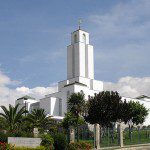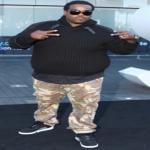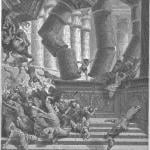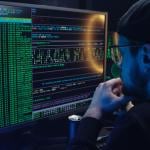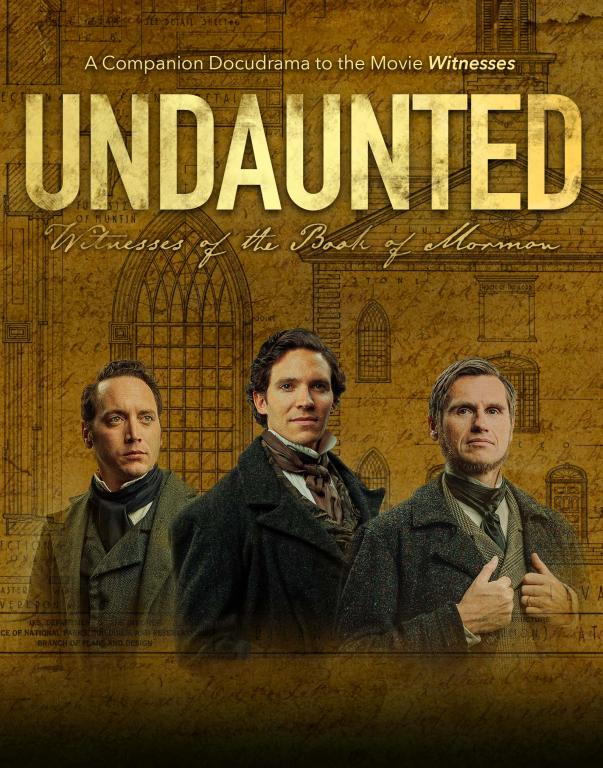
***
I’ve been pleased to see short thirty-second ads running on KSL-Television for the Interpreter Foundation docudrama Undaunted: Witnesses of the Book of Mormon. (I believe that eight of them will have been aired this weekend, altogether.) Undaunted will go public on 24 May 2022, somewhat less than two months from now.
***
From a testimony of Elizabeth Brotherton Pratt (1817-1897), an English convert to Mormonism who emigrated to Nauvoo, Illinois, in 1841, as it is reproduced in Hyrum L. Andrus and Helen Mae Andrus, Personal Glimpses of the Prophet Joseph Smith (American Fork, UT: Covenant Communications, 2009), 140:
After my father and our family apostatized and went away, I felt very sorrowful. One evening when going to bed I was feeling cast down, and my sister who had been dead for a number of years, came to me, called me by name and said “Be comforted, you are all right; you have a work to do for me.”
I wished to inquire what she meant, but she was gone. In two days after this the Prophet preached on the baptism for the dead.
As soon as the font was ready, I officiated for my sister as she had requested.
This story struck me, as there is a similar one in my own family.
My father joined the Church relatively late in his life. (I baptized him on the same night that I was set apart as a missionary; my brother confirmed him a member.) Years later, he became quite involved with family history research. At one point, though, he discovered that somebody else was submitting genealogical materials regarding his family for temple ordinances, and he was quite puzzled. He was, he thought, the only Church member in his extended Scandinavian Lutheran family.
To his surprise, we eventually discovered that the daughter of his favorite cousin (a cousin who had died several years earlier) had joined the Church in Colorado and had been submitting names for temple work. (My parents lived in California.) When I met her the first time, she told me the story of her conversion and of how, shortly after her own baptism, her father had appeared to her in a dream (actually, I believe, in several dreams over a period of time), encouraging her to do some kind of “work” for him. She couldn’t figure out, at first, what he was talking about. She knew nothing yet of “vicarious work for the dead.” Finally, though, she learned what was intended, did his work, and then went on to pursue further family history and temple work thereafter.
***
Oliver B. Huntington (1823-1907), who was baptized a member of the Church of Jesus Christ of Latter-day Saints in 1836, doesn’t always strike me as a completely reliable source. (Perhaps I’m being unfair, but there you have it.) I know of other accounts, however, that parallel the Oliver Huntington reminiscences below, which are included in Hyrum L. Andrus and Helen Mae Andrus, Personal Glimpses of the Prophet Joseph Smith (American Fork, UT: Covenant Communications, 2009):
I conversed with one old lady, 88 years old, who had lived with David Whitmer when Joseph Smith and Oliver Cowdery were translating the Book of Mormon in an upper room of the house. She was only a girl and saw them coming down from the translating room several times when they looked so exceedingly white and strange that she inquired of Mrs. Whitmer the cause of their unusual appearance. But Mrs. Whitmer was unwilling to tell the hired girl the true cause, as it was a sacred holy event connected with a holy sacred work which was opposed and persecuted by nearly everyone who heard of it.
The girl felt so strangely as seeing so strange and unusual appearances, she finally told Mrs. Whitmer that she would not stay with her unless she knew the cause of the strange looks of those men. Sister Whitmer then told her what the men were doing in the room above, and that the power of God was so great in the room that they could hardly endure it. At times angels were in the room in their glory which nearly consumed them.
This satisfied the girl and opened the way to embracing the gospel. She is the mother of Stephen Bunnel, and the Bunnel family of Provo. (121-122)
I know of at least one other source for this basic story — although, so far as I’m aware, neither it nor any other source mentions an almost unendurable “power of God . . . in the room” or the presence in the room of consuming “angels . . . in their glory.” Those details may be historically accurate, of course, but there’s also a non-negligible chance that they represent the ever-more-spectacular growth of an oral legend or even Oliver Huntington’s own conscious or unconscious embroidering of the tale.
However, and without going out of my way to seek them out, I’ve accumulated a considerable number of independent personal reminiscences from a variety self-described eyewitnesses that describe the Prophet Joseph Smith’s face as “glowing” or “luminous” or “transparent” at or near times of revelation. Weird, yes. But that’s what they say.
And this next little passage is either a second corroborating account of an episode from the early Mormon settlement of Commerce, Illinois, which shortly later became Nauvoo, or an altogether distinct but parallel story:
I spent an evening with my niece, Lucia Godfrey, and related the particulars of the fact that her father once died while living with Joseph Smith, and how he was raised from the dead by the Prophet. He was in the air above and saw the whole transaction, and also the weeping and mourning of the relatives. (123)
The other such episode that I have in mind involves the healing of Elijah Fordham, I believe. I’m struck by how similar these accounts are to literally scores of accounts of “out of body experiences” that I’ve read or even personally heard, in which the “experiencer” finds himself or herself looking down from the corner of a room or from elsewhere above the place where his or her body is in medical crisis.
Some critics have assured me that such accounts have been influenced by the pattern laid out in Dr. Raymond Moody’s pivotal 1975 bestseller Life After Life. And I actually expect that some fraudulent narratives have indeed been constructed in precisely that way. But this suspicion seems difficult to maintain for an experience that is alleged to have occurred in the late 1830s and that was reduced to writing, at the very latest, several decades before Dr. Moody’s birth.






